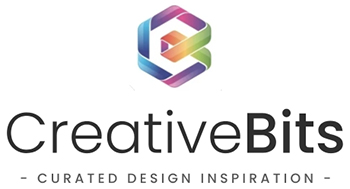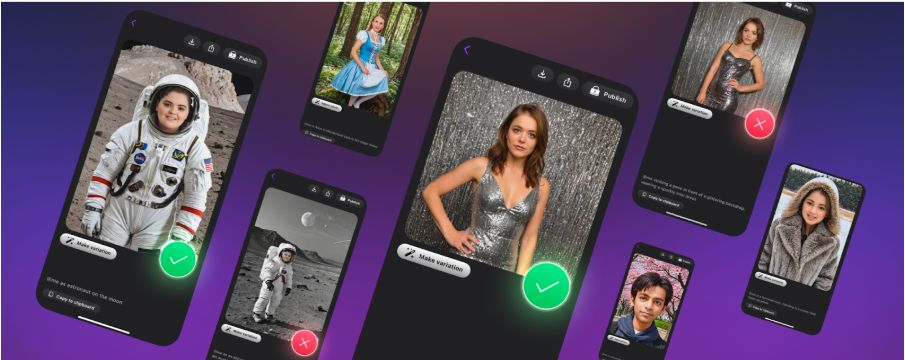Why AI Photography Matters Now
Digital photography isn’t what it used to be. Sure, everyone has a decent camera in their pocket, but creating truly compelling images still requires skill, equipment, and often luck with lighting and location. That’s where AI steps in.
GenYou tackles a specific problem – generating realistic portraits while keeping the person recognizable. Sounds simple. It’s tough. Most AI photo apps fail here. They’ll make you look completely different or produce artificial results.
The difference comes down to how GenYou handles facial identity. Traditional photo editing changes what’s already there. GenYou builds new images from scratch while maintaining core facial characteristics. Think of it like having a master artist who can paint you in any scenario while keeping you looking like yourself.
The Technology Behind Face Recognition
Here’s what makes GenYou interesting from a technical standpoint. The app maps your facial structure in detail – not just prominent features like eye color or nose shape but subtle bone structure, the way light hits your face, and even micro-expressions that make you uniquely you.
This mapping becomes a blueprint. When you want to appear on a beach in Thailand or dress like a Victorian gentleman, the AI uses this blueprint as a foundation. Everything else can change – lighting, clothing, background, even age – but your core identity stays intact.
The system relies on something called generative adversarial networks. Two AI systems compete against each other. One creates images, and the other tries to spot fakes. Through millions of iterations, they get incredibly good at producing convincing results.
Most competing apps skip this complexity. They use simpler methods that work fine for basic edits but fall apart when you need consistent results across multiple images. GenYou’s approach takes more computational power, but the results speak for themselves.
Going Places Without Actually Going
Location flexibility sets GenYou apart from standard portrait apps. Want a photo of yourself in front of the Eiffel Tower? The Himalayas? Your childhood bedroom recreated from memory? The app handles environmental integration surprisingly well.
The location feature isn’t just pasting your face onto random backgrounds. The AI analyzes lighting conditions, weather effects, and atmospheric perspective – all the subtle details that make a photo believable. Someone standing on a mountaintop will have different skin tones and shadows than someone lounging on a tropical beach.
Weather integration adds another layer of realism. Snow scenes adjust for cold-weather complexions. Desert environments account for harsh sunlight and heat effects. Urban settings consider everything from street lighting to pollution haze.
This environmental awareness extends to a cultural context, too. Traditional clothing appears appropriate for its historical period and geographical region. Modern fashion reflects current trends while considering climate and local customs.
Style Transformations That Make Sense
Fashion and style options go way beyond simple outfit swaps. GenYou understands how different fabrics behave, how clothing fits various body types, and how materials respond to lighting conditions.
Historical costumes represent particularly complex challenges. Creating authentic Victorian-era dress requires understanding how the clothes looked, how they were constructed, what materials were available, and how people carried themselves while wearing them.
Contemporary options cover everything from boardroom professional to street-style experimental. The AI grasps subcultural aesthetics – punk isn’t just leather and spikes; it’s a specific attitude reflected in posture and expression. The same goes for hipster, goth, prep, or any other style category.
Accessories receive similar attention. Jewelry catches light appropriately, watches show realistic reflections, and even small details like belt buckles or shoelaces are rendered with proper physics and materials.
Full Body Generation Challenges
Extending beyond facial portraits into full-body images creates exponentially more complexity. Human anatomy involves countless variables – muscle tone, posture, how weight distributes during different activities, and natural movement patterns.
GenYou handles these biological realities surprisingly well. Someone generated while running shows appropriate muscle tension and body mechanics. Sitting poses display realistic weight distribution. Even subtle details like how clothing wrinkles when someone bends their arm get processed correctly.
Activity-specific generation adds another difficulty layer. Dancing requires understanding rhythm and movement flow. Hiking needs appropriate gear and body positioning for outdoor terrain. Business meetings demand professional posture and appropriate environmental context.
The app also considers age and fitness level when generating full-body images. A 60-year-old won’t be positioned like a 20-year-old athlete, and the AI adjusts accordingly while maintaining facial identity consistency.
Creating Group Scenes
Multi-person image generation multiplies complexity exponentially. Each additional person requires individual identity preservation while maintaining group coherence. Lighting must work across all subjects, spatial relationships appear natural, and group dynamics should look authentic rather than artificially assembled.
Family photos present common use cases. Parents can create holiday cards featuring everyone in exotic locations without coordinating travel. Grandparents separated by distance can appear together with grandchildren for special occasions.
Friend groups leverage this for social content creation. Instead of struggling with scheduling conflicts and location logistics, they generate coordinated images for events, celebrations, or fun social media posts.
Business applications include team photos for remote companies, marketing materials featuring diverse groups, and corporate communications requiring representative imagery without extensive photo shoot coordination.
Building Digital Personas
Social media demands consistent visual branding, but creating hundreds of cohesive images traditionally requires enormous resources. Sexy AI Generator technology changes this equation entirely by enabling unlimited content generation while maintaining character consistency.
Digital persona creation extends beyond personal social media into commercial territory. Businesses develop brand representatives who can appear across marketing materials without model contracts or scheduling conflicts. These artificial personalities can maintain a consistent appearance while adapting to different products, seasons, or campaign themes.
The persona development process requires careful planning. Hair color, facial features, body type, and style preferences must remain consistent across thousands of images while allowing natural variation in expressions, poses, and settings.
Content creators use this to develop fictional characters, build brand identities, or explore creative concepts without traditional photography limitations. The key lies in maintaining believable consistency rather than exact duplication.
Quality Assessment Details
Image quality meets professional photography standards across multiple technical criteria. Skin rendering includes pore detail, natural color variation, and appropriate subsurface scattering effects. Eyes show realistic reflections, proper moisture levels, and accurate iris detail.
Hair generation handles individual strand definition, natural movement, and appropriate interaction with lighting and environmental factors. Different hair types – straight, curly, coarse, fine – each receive specific treatment based on their physical properties.
Environmental elements get similar attention. Water surfaces display correct reflection and refraction patterns. Fabric textures show realistic wear, threading, and material properties. Metallic objects exhibit proper shine, reflection, and surface characteristics.
Color accuracy extends beyond basic hue matching. The system adjusts skin tones for different lighting conditions, maintains color consistency between subjects and environments, and handles complex scenarios like mixed lighting sources.
How The App Works
GenYou runs on cloud infrastructure rather than processing everything locally on your device. This approach provides access to serious computational power typically reserved for professional workstations while keeping the mobile app lightweight and responsive.
The training process involves continuous improvement. New features, enhanced realism, and expanded style options result from ongoing development cycles. Users benefit from these improvements automatically without needing manual updates or additional downloads.
Processing optimization balances quality with speed. Advanced compression maintains visual fidelity while reducing file sizes and transfer times. Edge computing elements minimize server load and respond faster to common generation requests.
The development team regularly adds new location options, style categories, and generation capabilities based on user demand and technological advances. This keeps the app current with social media trends and artistic movements.
Real World Applications
Entertainment companies use GenYou for concept development, character design, and promotional materials. Independent filmmakers create marketing assets without expensive photo shoot budgets. Game developers generate character references and advertising content.
Educational applications leverage historical and geographical features for immersive learning. Students can visualize themselves in historical periods or geographical locations, making abstract concepts more concrete and memorable.
Marketing spans numerous sectors. E-commerce companies create diverse product advertisements showing various customer types. Travel agencies generate destination marketing featuring different demographic groups. Fashion brands develop lookbooks without coordinating multiple models and locations.
Corporate communications benefit from consistent team imagery, especially for remote companies where gathering everyone for traditional photos proves difficult or impossible.
Privacy and Data Considerations
Personal image data requires careful handling. GenYou implements standard privacy protections, including encrypted storage, limited retention periods, and precise user control over data deletion. Processing occurs in secured environments with regular security audits.
User consent mechanisms ensure people understand how their facial data gets used. The app provides straightforward options for account termination and complete data removal. Regular policy updates reflect evolving privacy regulations and user expectations.
Data minimization principles mean the app only processes information necessary for image generation. Facial mapping data serves generation purposes exclusively rather than broader data collection or advertising targeting.
Current Competition Analysis
The AI image generation market includes numerous competitors with varying approaches and capabilities. GenYou’s primary advantage lies in identity consistency – competing apps often produce results that look like different people rather than the same person in various scenarios.
Technical complexity separates it from simpler face-swap applications. Environmental integration, anatomical accuracy, and clothing physics require more sophisticated AI processing than basic filter applications provide.
User experience design balances accessibility with functionality. Both casual users and content professionals can achieve their creative goals without requiring specialized technical knowledge or extensive tutorials.
Where This Technology Heads Next
AI image generation continues evolving rapidly. Current developments suggest future capabilities in video generation, real-time processing, and enhanced environmental understanding. These advances will expand creative possibilities while maintaining the identity preservation that defines GenYou’s core value.
The broader trend involves democratizing professional-quality content creation. Tools once exclusive to major studios now operate on consumer devices, enabling independent creators to produce high-quality visual content across unlimited scenarios and settings.
This shift impacts multiple industries, from entertainment to education to marketing. As AI capabilities expand and processing costs decrease, we’ll likely see even more sophisticated applications that blur the line between artificial and traditional photography.


Comments are closed.